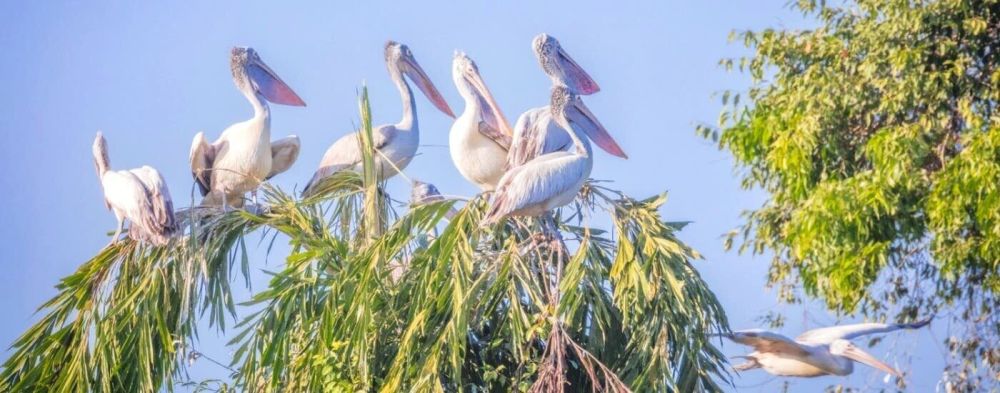

The scenic Ranganathittu Bird Sanctuary, nestled on the banks of the Kaveri River near Mysore in Karnataka, is the largest bird sanctuary in the state. Its history dates back to 1940 when the noted ornithologist Dr. Salim Ali, during a survey of the birds in the area, proposed the establishment of a sanctuary to the then Maharaja of Mysore, His Highness Krishnaraja Wodeyar IV. Recognizing the ecological significance of the locale, the Maharaja endorsed Dr. Ali's suggestion, and the sanctuary was officially formed. Over the years, Ranganathittu has become a favored nesting and breeding ground for a myriad of bird species, both endemic and migratory, making it a prominent spot for avian enthusiasts, nature lovers, and photographers.
Tourism at Ranganathittu Bird Sanctuary has flourished due to its rich biodiversity and the tranquil experience it offers visitors. Tourists flock to the sanctuary to indulge in bird watching and to take boat rides on the Kaveri River, which provide an up-close look at the islets where birds nest. Accessibility from Mysore – a city renowned for its heritage – and proximity to other tourist destinations in Karnataka like Bangalore and Coorg have bolstered its popularity. The peak season for tourism is during the migratory months from November to February, when the sanctuary becomes home to a vibrant variety of birds from Siberia, Latin America, North America, and other regions. Among them are the painted stork, pelicans, herons, egrets, and spoonbills, to name a few. Educational tours and bird-watching excursions are also organized by various groups, enhancing the knowledge of visitors about the avian species and the importance of conserving their habitats.
Lately, tourism at the sanctuary has seen a steady growth with the introduction of facilities such as better parking, improved accessibility for the differently-abled, and the addition of a nature interpretation center to aid visitor understanding of the ecosystem. The government's efforts in promoting eco-tourism have also helped maintain the sanctuary as a prime bird-watching spot. Sustainable tourism practices are increasingly encouraged to minimize human impact on the sanctuary's environment. This includes regulated boat rides, controlled visitor flow during the breeding season, and strict anti-littering policies to preserve the natural beauty and health of the sanctuary. Digital presence and promotion through social media platforms have further heightened its appeal to the younger demographic who seek nature escapades close to urban centers. The trend of weekend getaways has positioned Ranganathittu Bird Sanctuary as a must-visit destination for those looking to unwind and reconnect with nature.
Conservation has been pivotal in the thriving ecosystem of Ranganathittu Bird Sanctuary. The sanctuary is part of the Ramsar Convention, emphasizing the conservation and sustainable use of important wetlands. Authorities and local organizations work hand in hand to protect the area from pollution, poaching, and habitat destruction, which are part and parcel of maintaining the sanctuary's allure for tourists and the safety of its avian inhabitants.
Ranganathittu Bird Sanctuary stands as a testament to the successful amalgamation of conservation efforts and tourism development. It continues to be a sanctuary not only for its winged residents but also for the human spirit, looking for a moment of peace in the lap of nature.